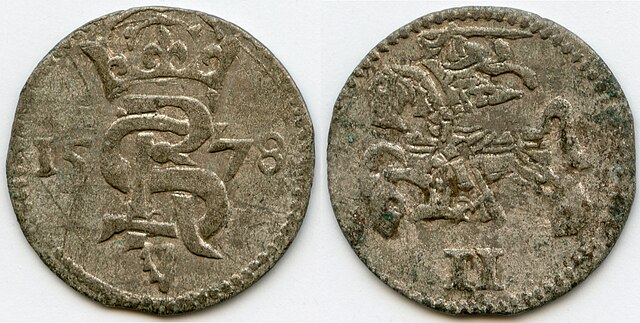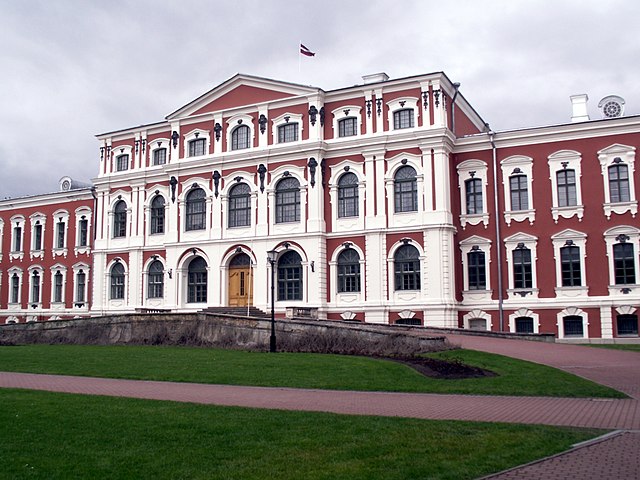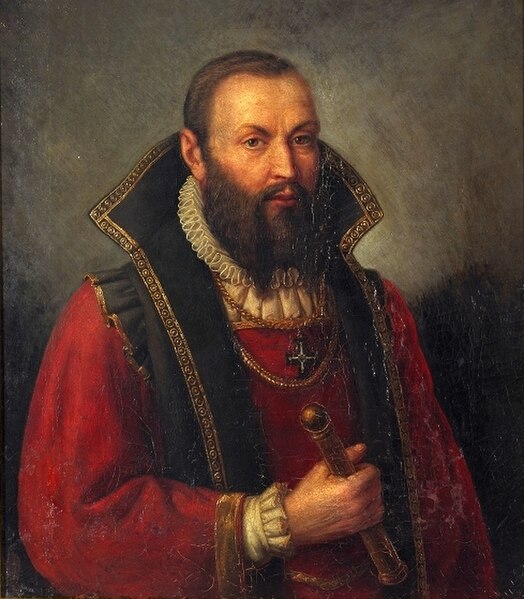Anna Ioannovna, also russified as Anna Ivanovna and sometimes anglicized as Anne, served as regent of the duchy of Courland from 1711 until 1730 and then ruled as Empress of Russia from 1730 to 1740. Much of her administration was defined or heavily influenced by actions set in motion by her uncle, Peter the Great, such as the lavish building projects in St. Petersburg, funding the Russian Academy of Science, and measures which generally favored the nobility, such as the repeal of a primogeniture law in 1730. In the West, Anna's reign was traditionally viewed as a continuation of the transition from the old Muscovy ways to the European court envisioned by Peter the Great. Within Russia, Anna's reign is often referred to as a "dark era".
Anna of Russia
Coinage of Anna of Russia
Empress Anna abrogates the "Conditions"
In this 1878 painting by Valery Jacobi, the scared newlyweds Mikhail Golitsyn and Avdotya Buzheninova sit on the icy bed to the left; the jocular woman in golden dress is Empress Anna.
Duchy of Courland and Semigallia
The Duchy of Courland and Semigallia was a duchy in the Baltic region, then known as Livonia, that existed from 1561 to 1569 as a nominally vassal state of the Grand Duchy of Lithuania and subsequently made part of the Crown of the Polish Kingdom from 1569 to 1726 and incorporated into the Polish–Lithuanian Commonwealth in 1726. On March 28, 1795, it was annexed by the Russian Empire in the Third Partition of Poland.
Double-Denar with monogram of Grand Duke Stephen Báthory and the coat of arms of Lithuania, minted in Mitau, 1578
Coin of the Duchy of Courland and Semigallia with portrait of Ernst Johann von Biron, coat of arms of Poland and the coat of arms of Lithuania, 1764
Jelgava Palace, the main residence of the dukes
Image: Gotthard Kettler








